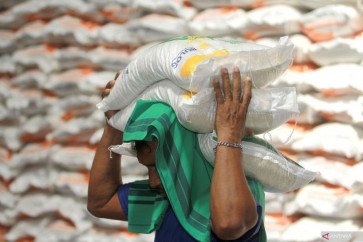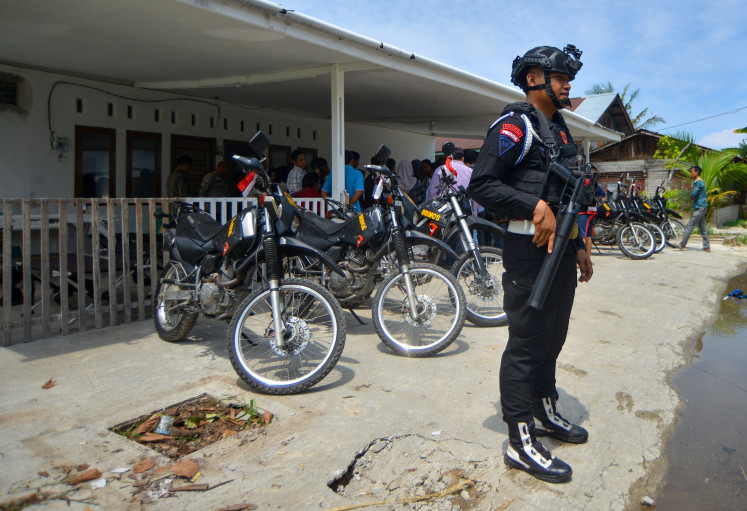Popular Reads
Top Results
Can't find what you're looking for?
View all search resultsPopular Reads
Top Results
Can't find what you're looking for?
View all search resultsCity govt stumped by increase in poor population
Jakarta’s poor population increased over the past year, bucking a trend that had seen the demographic steadily decrease from 2008-2010
Change text size
Gift Premium Articles
to Anyone
J
akarta’s poor population increased over the past year, bucking a trend that had seen the demographic steadily decrease from 2008-2010.
The Central Statistics Agency (BPS) announced on Friday that as of March the capital’s poor population had increased by 51,240 year-on-year, bringing the total population to 363,420 people from 312,180 in March last year.
The report showed that 3.75 percent of Jakarta’s 9.6 million population were poor.
Jakarta had seen its poor population steadily decline over the previous three years; with 379,000 poor people in 2008 and 323,000 in 2009, according to the BPS.
Earlier this month, Governor Fauzi Bowo said the poor population would decrease to 300,000 in 2012.
BPS Jakarta chief Agus Suherman said the increase was due to rising prices over the last year.
The BPS uses a benchmark called the Poverty Line to define who is poor.
The Poverty line is based on what the BPS calculates to be the minimum monthly expenses of a single person living in the city.
Those who spend less than this amount are considered poor.
“This year’s Jakarta Poverty Line was calculated at Rp 355,480 (US$41.5), increasing from last year’s Rp 331,169,” Agus said.
The agency chief said that the increasing poverty line was a direct result of the increasing inflation rate in the city.
In year-on-year cumulative terms, the city recorded that the inflation rate increased to 5.95 percent from 3.39 percent as of March this year.
Agus said the increasing prices of food had had a larger impact than normal on the Poverty Line this year.
Out of a total 52 food commodity referred to in the poverty line calculation, the prices of rice, chicken and eggs were the biggest contributors to the increasing spending demands for Jakartans.
Non-food commodities that contributed to the higher living costs include electricity, health service and education.
Separately on Friday, Margani Mukhtar, the city’s deputy governor for civic and housing affairs, said that the increasing poor population number was unexpected.
“We had been focusing on programs to help reduce the burden on the poor, like providing inexpensive education and health services in poverty-ridden areas and holding economic empowerment programs,” Margani told The Jakarta Post.
He said the city had yet to receive a more detailed report of the BPS survey. “We will evaluate their findings as soon as we receive the report from the agency,” he said.
The BPS National Economy and Social Survey in Jakarta was held in March, reaching a total of 3,072 households across the city. The agency also combined data from the Basic Needs Commodity Packet Survey.
Nationwide, the BPS reported a one million drop year-on-year in the number of poor people in
Indonesia, from 31.02 million in March last year to 30.02 million as of March 2011.
The BPS attributed the drop to a decrease in the number of poor people living in rural areas, from 19.93 million people to 18.97 million people, or by 950,000 people, year-on-year.
The urban poor population in the archipelago only dropped by 50,000 people, from 11.1 million to 11.05 million.










